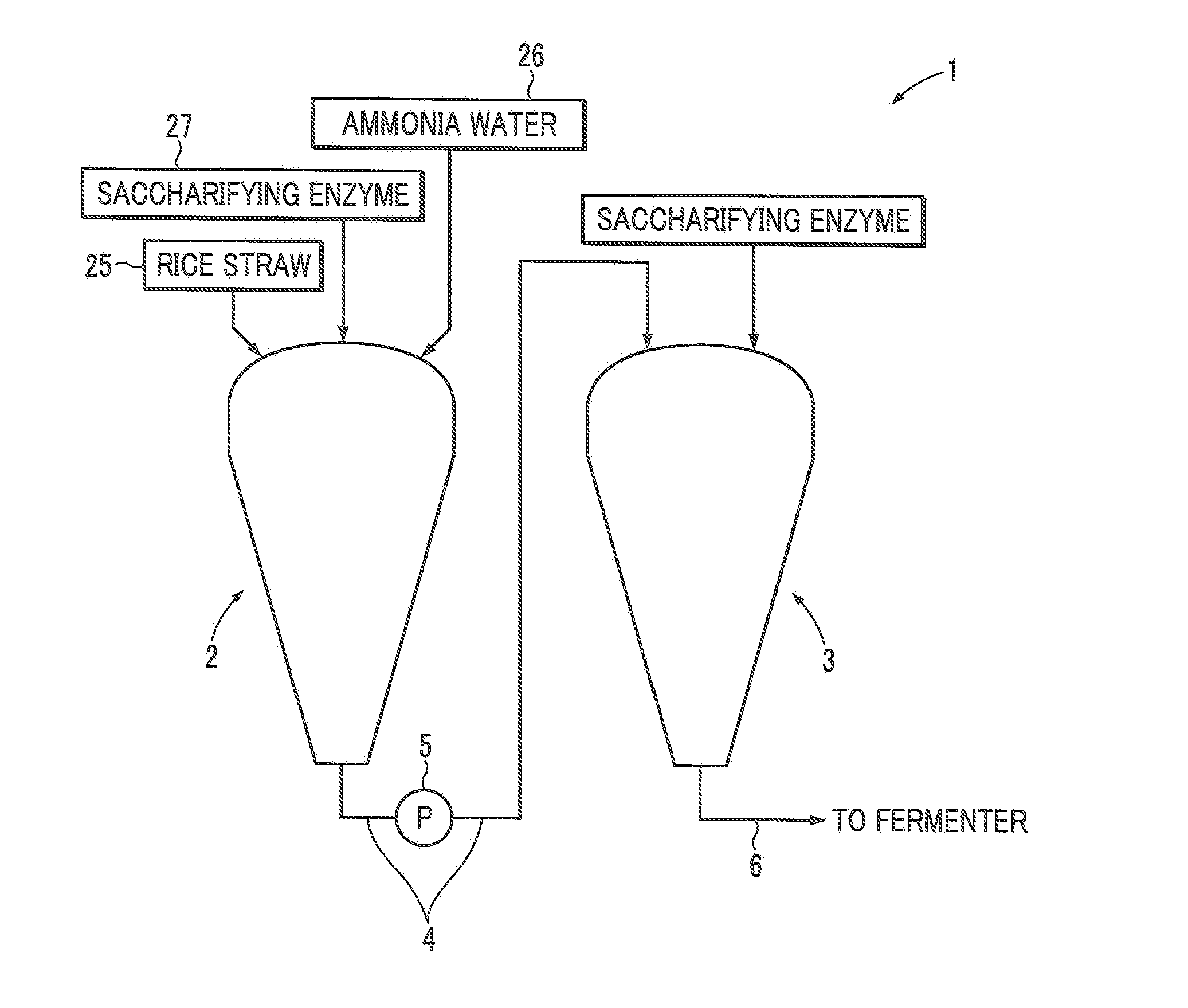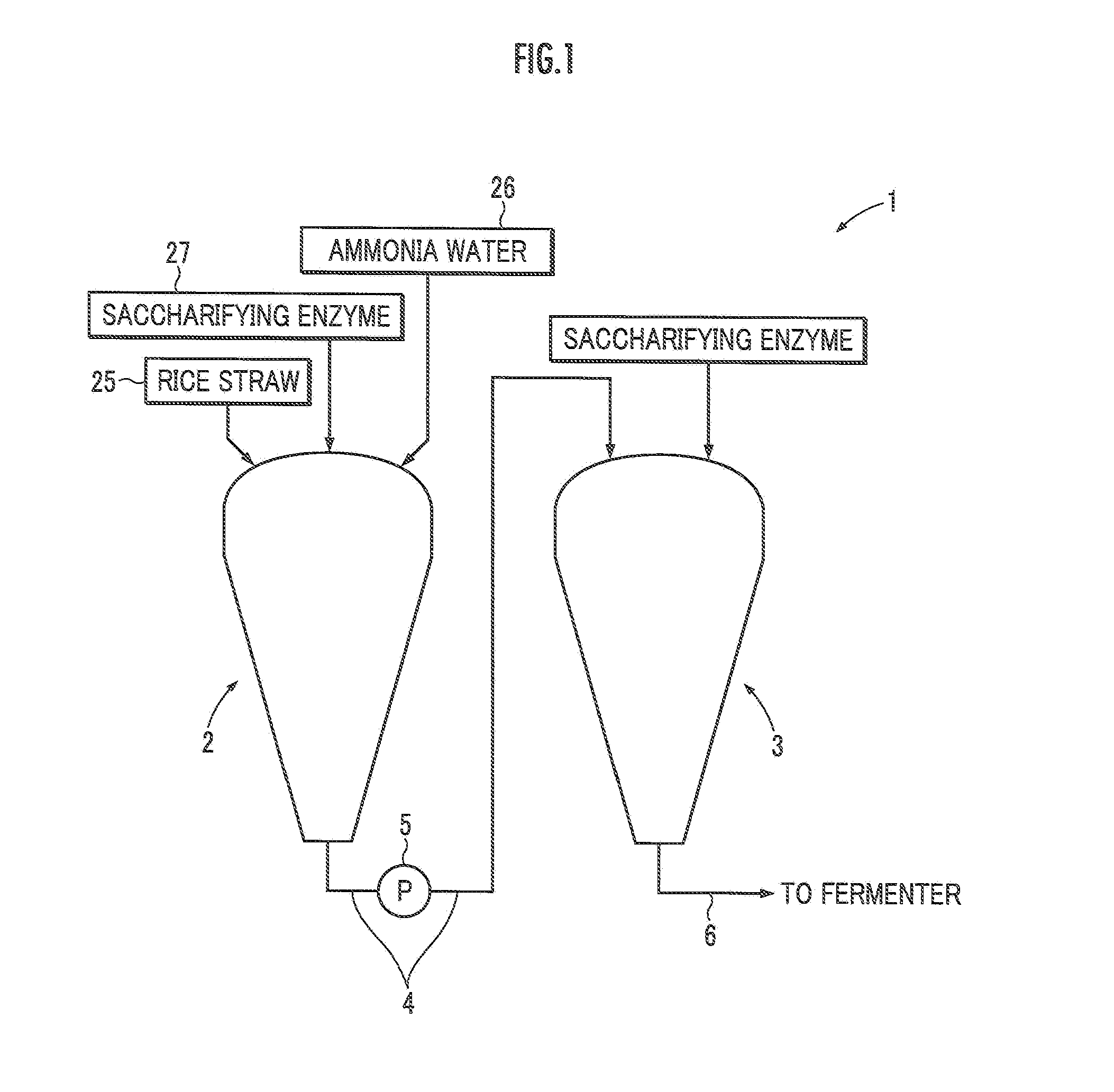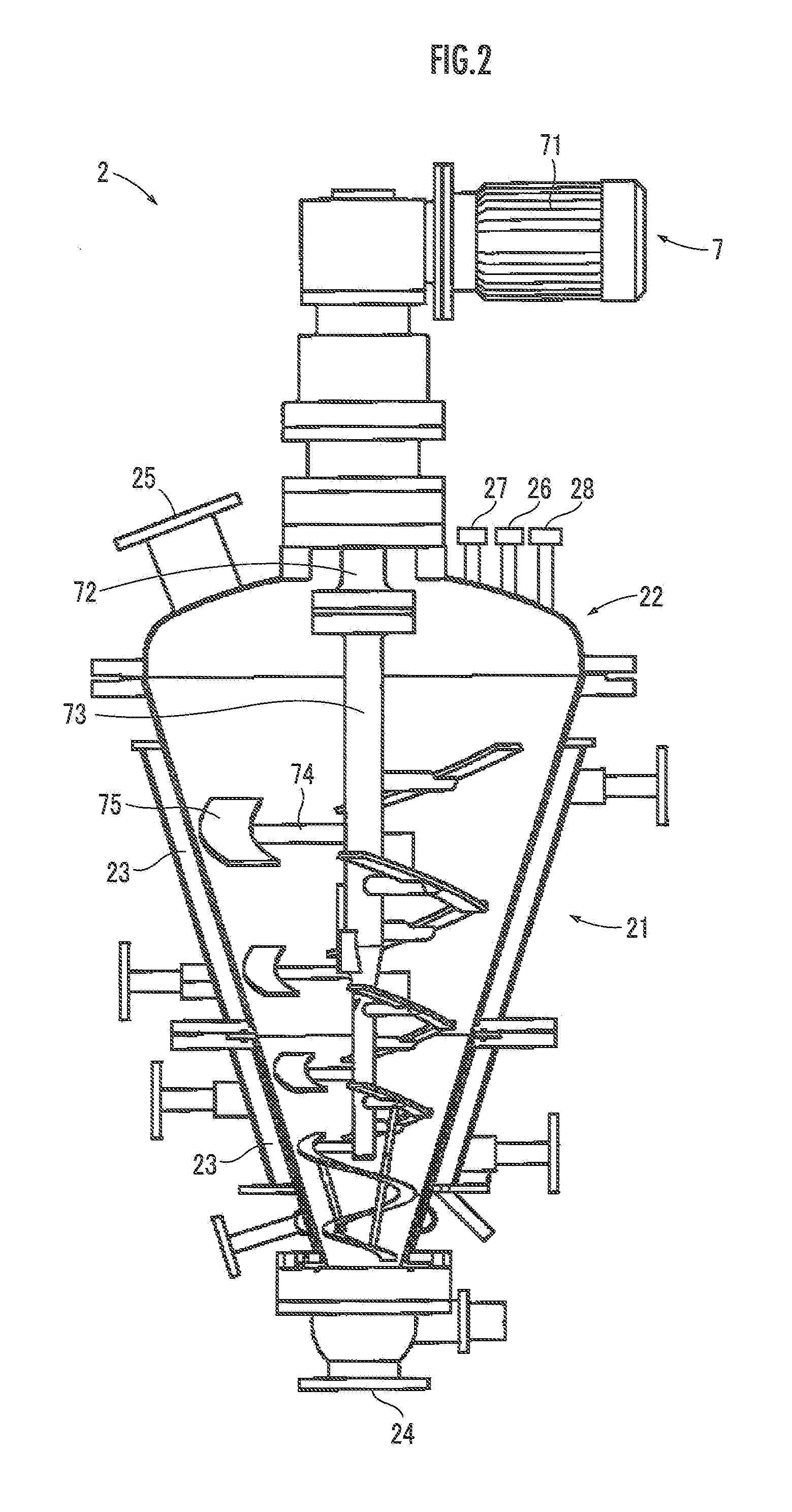Method for treating lignocellulosic biomass
- Summary
- Abstract
- Description
- Claims
- Application Information
AI Technical Summary
Benefits of technology
Problems solved by technology
Method used
Image
Examples
example
[0072]In this Example, first, 386 kg of air-dried rice straw (lignocellulosic biomass) having a water content of 12% by mass was crushed using a cutter mill into a size that permits passage through a sieve having a mesh size of 3 mm, and then added from the rice straw inlet 25 into the container 21 of the pretreatment chamber 2 (trade name: PV Mixer, manufactured by KOBELCO ECO-SOLUTIONS Co., Ltd., internal capacity: 2000 L) shown in FIG. 2.
[0073]Next, in the pretreatment step, ammonia water having a concentration of 25% by mass with respect to the same mass as the dry mass 340 kg of the rice straw (386 kg) was added into the container 21 from the ammonia water inlet 26, while the rice straw, etc., in the container 21 was stirred using the stirring unit 7 to obtain a substrate mixture of the rice straw mixed with the ammonia water.
[0074]Next, with stirring by the stirring unit 7 maintained, a heat medium was circulated in the jacket 23 to keep the rice straw, etc., for heating at 80...
PUM
 Login to View More
Login to View More Abstract
Description
Claims
Application Information
 Login to View More
Login to View More - R&D
- Intellectual Property
- Life Sciences
- Materials
- Tech Scout
- Unparalleled Data Quality
- Higher Quality Content
- 60% Fewer Hallucinations
Browse by: Latest US Patents, China's latest patents, Technical Efficacy Thesaurus, Application Domain, Technology Topic, Popular Technical Reports.
© 2025 PatSnap. All rights reserved.Legal|Privacy policy|Modern Slavery Act Transparency Statement|Sitemap|About US| Contact US: help@patsnap.com



